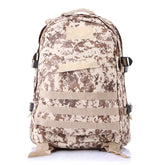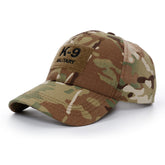How to Choose the Right Tactical Gloves?
Tactical gloves are an essential part of any gear setup, whether you’re a soldier, law enforcement officer, outdoor enthusiast, or simply someone who enjoys adventure and rugged activities. While they may look like simple hand coverings at first glance, tactical gloves are carefully engineered to provide protection, comfort, and functionality in demanding environments. Choosing the right pair is crucial because the wrong gloves can limit your mobility, reduce grip, or fail to protect your hands when you need it most.
In this guide, we’ll explore everything you need to know about choosing the right tactical gloves, from materials and fit to specific use cases, so you can make an informed decision that fits your lifestyle and activity level.
Understanding Tactical Gloves: What Makes Them Different
Unlike ordinary gloves, tactical gloves are designed for high-performance scenarios. They combine durability, dexterity, and protective features, making them suitable for military operations, law enforcement, outdoor adventures, and tactical sports.
Key features of tactical gloves include:
- Reinforced palms and knuckles for impact protection
- Abrasion-resistant materials that withstand rough surfaces
- Flexible and breathable fabrics for comfort and mobility
- Enhanced grip surfaces for handling tools, weapons, or equipment
The right tactical gloves allow you to maintain full control of your hands while protecting them from cuts, abrasions, burns, or environmental hazards. Whether climbing, shooting, hiking, or performing heavy-duty tasks, your gloves should enhance your performance rather than restrict it.
Choosing the Right Material
The material of your tactical gloves will determine how well they perform in specific scenarios. Here are the most common options:
1. Leather Tactical Gloves
Leather gloves provide excellent durability, protection, and a classic tactical look. They are ideal for handling rough objects and tools and offer decent dexterity for most tasks. Full-grain leather is the strongest option, but it may require a break-in period.
2. Synthetic Gloves
Materials like Kevlar, nylon, polyester, and spandex blends are lightweight, breathable, and flexible. These gloves are often more affordable than leather and excel in environments where mobility and ventilation are important.
3. Hybrid Gloves
Many tactical gloves combine leather and synthetic fabrics to offer the best of both worlds—durability in high-wear areas and flexibility in others. This hybrid design is particularly popular for shooting, hiking, and outdoor tactical use.
Size and Fit: Why It Matters
One of the most overlooked aspects of tactical gloves is fit. Gloves that are too loose can reduce grip and control, while gloves that are too tight can restrict circulation and movement.
When measuring for gloves:
- Use a flexible tape measure around the widest part of your hand (excluding the thumb).
- Compare your measurements with the manufacturer’s sizing chart.
- Consider the intended use: shooting gloves often require a snug fit for trigger control, while work gloves may allow slightly more room for padding and movement.
Remember, proper fit improves performance and safety, so don’t skip this step when selecting tactical gloves.
Grip and Dexterity: Choosing Based on Activity
Your intended activity will largely dictate the type of tactical gloves you should choose:
- Shooting or firearms training: Look for gloves with textured palms and touchscreen-compatible fingertips. Lightweight, flexible materials like spandex blends or thin leather offer maximum control.
- Outdoor activities (hiking, climbing, camping): Reinforced palms, breathable fabrics, and moisture-wicking linings help you maintain grip and comfort for long durations.
- Work and heavy-duty tasks: Durable leather or Kevlar gloves with padded knuckles protect your hands from abrasion and impacts. High-grip palms are essential for tool handling.
- Cold weather operations: Insulated tactical gloves with water-resistant coatings keep your hands warm and dry while maintaining dexterity.
Different gloves excel in different scenarios, so it’s crucial to match your gloves to your main activity.
Protection and Reinforcements
One of the main reasons to invest in tactical gloves is hand protection. Look for features such as:
- Knuckle protection: Hard or padded knuckles shield your hands from impacts and abrasions.
- Palm reinforcements: Extra layers of durable fabric prevent wear and tear in high-contact areas.
- Finger reinforcements: Some gloves feature partial finger armor for added protection during tactical operations or heavy work.
- Cut-resistant materials: Kevlar or similar fibers protect against sharp objects or rough surfaces.
The level of protection you need depends on your environment and activity. For example, urban tactical use may focus on dexterity and grip, while field operations or hiking in rough terrain require more reinforced protection.
Additional Features to Consider
Modern tactical gloves often include several additional features that enhance convenience and functionality:
- Touchscreen compatibility: Allows you to use smartphones or tablets without removing gloves.
- Adjustable wrist closures: Velcro or elastic cuffs ensure a secure fit and prevent debris from entering.
- Moisture-wicking lining: Keeps hands dry during extended use.
- Reflective or high-visibility accents: Useful for low-light operations or emergency situations.
These small but thoughtful details can make a big difference in overall performance and user satisfaction.
While selecting gloves with the right materials, reinforcements, and additional features is critical, even the best tactical gloves will only perform optimally if properly maintained. Regular care ensures that the gloves retain their durability, flexibility, and protective qualities over time.
How to Maintain Your Tactical Gloves
Proper maintenance ensures that your tactical gloves last for years:
- Clean regularly: Wipe off dirt and debris, or hand wash with mild soap if necessary. Avoid machine washing unless specified by the manufacturer.
- Dry naturally: Air dry your gloves away from direct heat to prevent shrinkage or material damage.
- Condition leather gloves: Use leather conditioner to keep them supple and prevent cracking.
- Inspect for wear: Check reinforced areas, seams, and closures before each use to ensure safety.
Taking good care of your gloves maximizes their lifespan and preserves their protective properties.
Conclusion: Invest in the Right Tactical Gloves
Choosing the right tactical gloves is about balancing protection, dexterity, comfort, and durability. By considering material, size, intended activity, and additional features, you can find gloves that enhance your performance whether you’re in the field, on a hike, or performing heavy-duty tasks.
For anyone building a complete tactical gear setup—including tactical pants, tactical backpacks, and gloves—selecting high-quality gloves is a critical step. Investing in the right pair ensures safety, comfort, and reliability in every scenario.
Explore our full tactical gloves collection today to find the perfect pair for your needs and experience the difference professional-grade gear makes.







